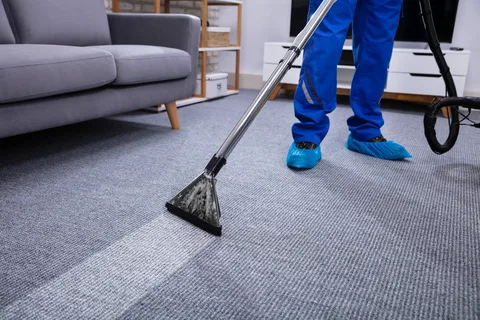Carpet cleaning is an essential part of home maintenance, and choosing the right method can make a significant difference in the appearance and longevity of your carpets. Steam cleaning is one of the most popular methods, but how does it compare to other cleaning techniques like dry cleaning, shampooing, and bonnet cleaning? In this article, we’ll explore the pros and cons of steam cleaning versus other carpet cleaning methods to help you make an informed decision.
1. What Is Steam Carpet Cleaning ?
The Process of Steam Cleaning
Steam cleaning, also known as hot water extraction, involves using hot water and a cleaning solution to break down dirt, stains, and allergens trapped in carpet fibers. The steam cleaner injects hot water deep into the carpet, agitating the fibers, and then extracts the dirty water along with debris using a powerful vacuum. This process is often followed by a drying period, as carpets can remain damp for several hours.
Benefits of Steam Cleaning
- Deep Clean: Steam cleaning reaches deep into carpet fibers to remove dirt, stains, and allergens that other methods may miss.
- Kills Germs and Bacteria: The high temperature of the steam helps kill bacteria, dust mites, and other harmful microorganisms, promoting a healthier environment.
- Environmentally Friendly: Steam cleaning requires less chemical cleaning agents compared to other methods, making it a more eco-friendly option.
2. Dry Cleaning (Low Moisture Cleaning)
The Process of Dry Cleaning
Dry cleaning, or low moisture cleaning, uses specialized cleaning solutions that break down dirt and stains without soaking the carpet. This method involves applying a powder or foam to the carpet, which is then worked into the fibers using a machine. After a short period, the cleaning solution is vacuumed away, leaving the carpet dry and clean.
Benefits of Dry Cleaning
- Quick Drying Time: Since this method uses little to no water, carpets dry much faster compared to steam cleaning, often within an hour.
- No Risk of Over-Wetting: Dry cleaning is a safer option for delicate carpets, as it eliminates the risk of over-wetting, which can lead to mold growth or carpet damage.
- Convenient for Busy Homes: Because of the rapid drying time, dry cleaning is ideal for homes with high foot traffic or in situations where you need the carpet cleaned quickly.
Drawbacks of Dry Cleaning
- Shallow Cleaning: Dry cleaning is effective for surface dirt but may not provide a deep clean compared to steam cleaning. It may not remove embedded dirt or stains deeply embedded in the carpet fibers.
- Chemical Use: While some dry cleaning products are more eco-friendly than others, the chemicals used may still leave behind residues that can irritate sensitive individuals.
3. Shampooing
The Process of Shampooing Carpets
Shampooing is one of the oldest carpet cleaning methods. It involves applying a foamy cleaning solution to the carpet and agitating the fibers with a machine. The machine works the solution into the carpet to loosen dirt, which is then extracted with a wet vacuum. The carpet is left damp, and drying time typically ranges from a few hours to a day.
Benefits of Shampooing
- Effective for Surface Dirt: Shampooing is particularly effective at cleaning surface dirt and stains. It can also help refresh carpets by restoring their color and appearance.
- Relatively Inexpensive: Shampooing machines and products are often more affordable compared to steam cleaning equipment, making it a cost-effective choice for homeowners.
Drawbacks of Shampooing
- Long Drying Time: Carpet shampooing can leave carpets quite wet, leading to a longer drying time compared to dry cleaning and steam cleaning.
- Residue Build-Up: If not properly rinsed, shampooing can leave soap residue behind, which can attract more dirt and make the carpet appear dirty again quickly.
- Less Effective for Deep Cleaning: Shampooing doesn’t reach as deep into the carpet fibers as steam cleaning, meaning it might not be effective at removing deeply embedded dirt or allergens.
4. Bonnet Cleaning
The Process of Bonnet Cleaning
Bonnet cleaning is a method typically used for commercial cleaning. It involves using a machine with a large absorbent pad (the bonnet) that is soaked in a cleaning solution. The machine is moved across the carpet, and the pad absorbs dirt and grime from the surface. After cleaning, the bonnet is replaced, and the carpet is left to dry.
Benefits of Bonnet Cleaning
- Quick Results: Bonnet cleaning is faster than many other carpet cleaning methods because it focuses on the surface. It’s ideal for cleaning high-traffic areas where dirt accumulates quickly.
- Low Moisture: Like dry cleaning, bonnet cleaning uses minimal moisture, making it suitable for carpets that cannot withstand heavy water usage.
Drawbacks of Bonnet Cleaning
- Surface-Level Cleaning: Bonnet cleaning primarily focuses on the surface, which means it doesn’t provide a deep clean. It may not be effective for removing stubborn stains or deeply embedded dirt.
- Potential for Residue: Like shampooing, bonnet cleaning can leave behind cleaning solution residue, which may attract more dirt over time.
5. Comparison of Steam Cleaning vs. Other Methods
Deep Clean vs. Surface Clean
When it comes to deep cleaning, steam cleaning is the clear winner. The hot water extraction process can reach deeper into the carpet fibers, removing dirt, stains, allergens, and bacteria that other methods might miss. In contrast, dry cleaning and bonnet cleaning tend to focus on surface dirt, and while they are effective at refreshing carpets, they may not provide the same level of deep cleaning.
Drying Time
One of the biggest advantages of dry cleaning and bonnet cleaning is the fast drying time. Dry cleaning usually dries within an hour, while steam cleaning can take several hours to a day to fully dry, depending on the carpet type and humidity levels. If you need a fast solution or if you have a busy household, these methods might be more convenient.
Cost-Effectiveness
Steam cleaning can be more expensive, especially when hiring professionals or renting equipment. Dry cleaning is often a more affordable option, with quicker results, but it may not provide the same deep cleaning level. Shampooing is another budget-friendly option but may require more frequent cleaning due to its shallow cleaning effect.
Health Benefits
Steam cleaning is the best option for removing allergens, bacteria, and dust mites, making it an excellent choice for households with allergies or respiratory issues. It’s also the most effective at killing germs and bacteria due to the high temperature of the steam. Dry cleaning and shampooing may not be as effective in sanitizing the carpet.
Ideal Use Cases
- Steam Cleaning: Best for deep cleaning, removing stubborn stains, and improving indoor air quality.
- Dry Cleaning: Ideal for those who need quick results, have delicate carpets, or are dealing with light surface dirt.
- Shampooing: Suitable for homeowners on a budget who need to clean surface dirt and refresh their carpets.
- Bonnet Cleaning: Best for commercial properties or high-traffic areas that need surface cleaning on a budget and with minimal moisture.
Conclusion
Each carpet cleaning method has its advantages and is suited to different needs. Steam cleaning provides the deepest clean, effectively removing dirt, stains, and allergens from deep within the carpet fibers. Dry cleaning offers quick results with minimal moisture, making it a great option for delicate carpets or busy households. Shampooing and bonnet cleaning are cost-effective methods for surface cleaning but may require more frequent attention. Understanding your specific needs—whether it’s deep cleaning, quick drying, or cost efficiency—will help you choose the best carpet cleaning method for your home.
FAQs
Is steam cleaning better for pet owners?
Yes, steam cleaning is ideal for pet owners, as it removes deep-set dirt, odors, and allergens that may be trapped in the carpet. It’s also effective at eliminating pet urine stains and bacteria.
How often should I have my carpets steam cleaned?
It’s recommended to steam clean your carpets every 12-18 months, but homes with pets, children, or high traffic may need more frequent cleanings.
Can steam cleaning damage my carpet?
When done properly, steam cleaning is safe for most carpets. However, excessive moisture or improper handling can damage certain carpet fibers, so it’s important to hire a professional if you’re unsure about the process.
Is dry cleaning as effective as steam cleaning?
Dry cleaning is effective for light cleaning and quick refreshment, but it doesn’t provide the same deep cleaning as steam cleaning. For a thorough clean and to remove allergens and bacteria, steam cleaning is the better option.

